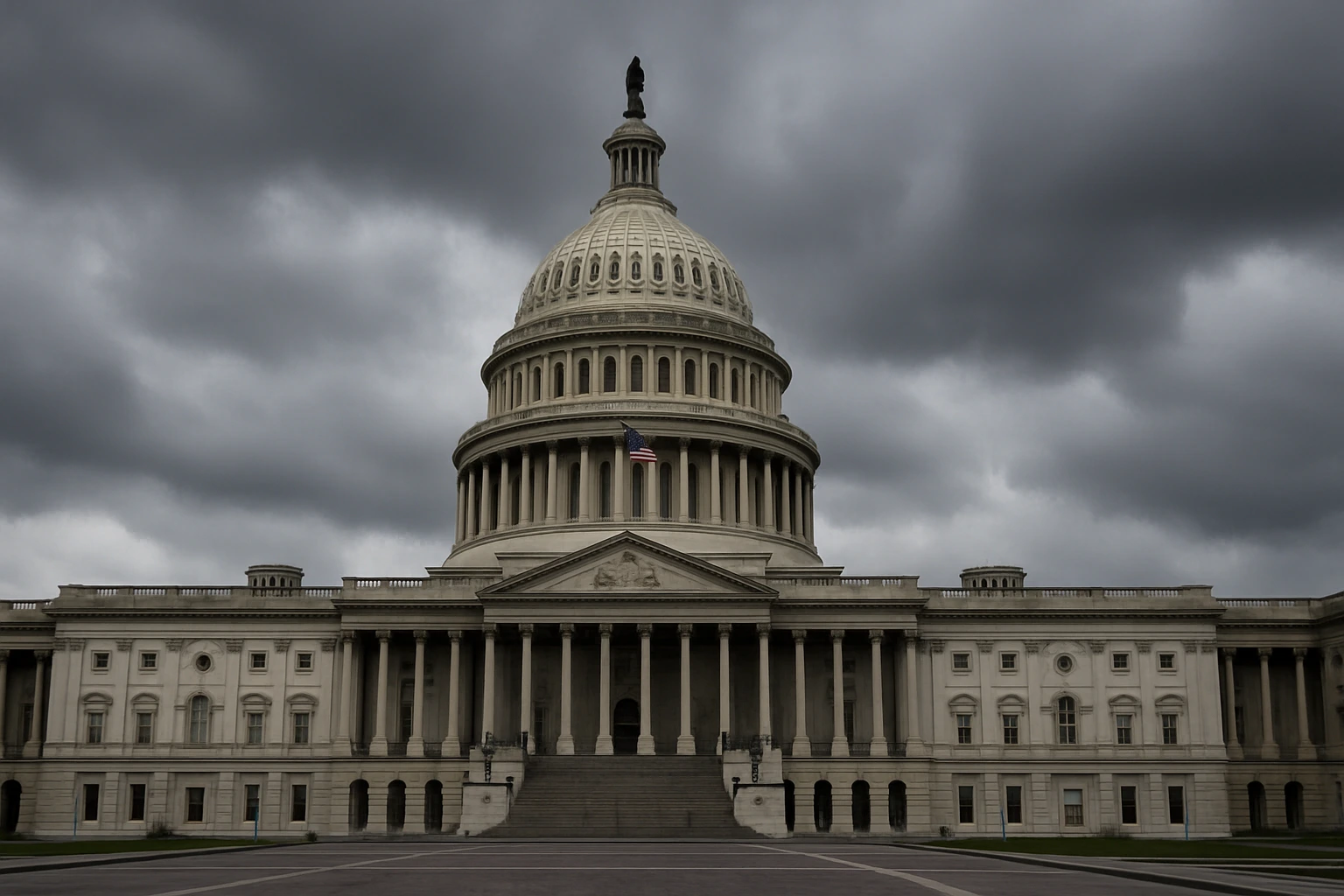WASHINGTON — The US government entered a full fledged funding crisis on Wednesday, forcing widespread shutdowns across federal agencies after Congress and the White House failed to strike a budget deal. The stalemate, rooted in entrenched partisan divisions, marks the 15th such disruption since 1981 and leaves hundreds of thousands of employees without pay.
Officials warned the US government funding crisis would suspend major operations, delay vital economic data, and cost the economy an estimated $400 million per day. With no clear path to resolution, the political impasse threatens to stretch into weeks.
The shutdown began after lawmakers missed the fiscal year deadline to approve new spending measures. Senate Democrats blocked a Republican led stopgap bill on Tuesday, citing its failure to extend expiring health benefits for millions of Americans.
Republicans, led by President Donald Trump, argued that healthcare provisions should be debated separately. The disagreement triggered a funding lapse that forced agencies such as NASA, the Environmental Protection Agency, and the Labor Department to halt operations.
This isn’t about politics it’s about people losing vital coverage, Senate Majority Leader Chuck Schumer said. “We can’t simply look the other way.”
Republican Senate Leader John Thune placed the blame on Democrats, calling the funding crisis “a reckless political maneuver.”
Economists warn the US government funding crisis could have far reaching economic consequences. Government shutdowns create ripple effects across industries, from travel to defense, said Sarah McMillan, senior fellow at the Brookings Institution.
The loss in productivity, delayed contracts, and reduced consumer confidence can slow overall growth. During the 2018 2019 shutdown, the longest in US history, GDP growth fell by an estimated $11 billion, with some losses unrecovered. “If this extends beyond two weeks, we’ll likely see similar or worse outcomes,” McMillan said.
Vice President JD Vance issued concerns over air travel safety, warning that unpaid air traffic controllers and Transportation Security Administration staff could affect operations. “These are essential workers under incredible stress,” Vance said on Fox News.
Federal officials estimate about 750,000 workers will be furloughed, while another 1.3 million deemed “essential” will continue working without pay.
Key economic reports including the September jobs data will be delayed, leaving investors without critical insights. Wall Street responded cautiously, with the S&P 500 slipping 0.6 percent amid uncertainty.
Past shutdowns, including the 35 day closure in 2018 2019, highlight the economic costs of recurring budget deadlocks. The US government funding crisis adds fresh volatility to an economy already navigating inflation and interest rate pressures.
Across the country, federal employees voiced frustration over missed paychecks and mounting uncertainty. “I’ve been through shutdowns before, but it never gets easier,” said Anthony Rodriguez, an EPA analyst in Denver. “It’s not just lost pay it’s lost morale.”
Small businesses dependent on government contracts are also feeling the pinch. “We don’t qualify for back pay,” said Jasmine Lee, owner of a catering firm in Virginia. “If the funding crisis drags on, we’ll have to cut staff.”
At airports, travelers reported longer wait times as unpaid TSA officers managed crowds. “They’re doing their best, but you can feel the tension,” said traveler Maria Gonzalez in Atlanta.
Lawmakers have signaled no imminent breakthrough. Analysts suggest the standoff may persist as both parties position themselves for the 2026 midterm elections.
This is a classic Washington power struggle, said Georgetown University political analyst Paul Henderson. “Each side wants to frame the funding crisis as the other’s fault ahead of election season.”
Some moderate lawmakers have floated a short term measure to restore funding, but neither chamber has scheduled new votes.
As the US government funding crisis deepens, millions of Americans brace for financial strain and service disruptions. The stalemate underscores Washington’s deep partisan fractures and the growing cost of political gridlock.
Until Congress and the White House agree on a path forward, federal workers, contractors, and citizens alike remain caught in a shutdown with no end in sight.

